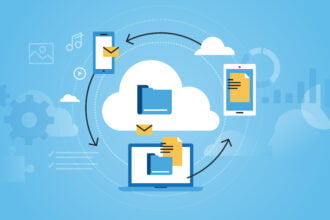 This post sponsored by the Enterprise CIO Forum and HP.
This post sponsored by the Enterprise CIO Forum and HP.
Today’s users expect IT services and response to be immediate, interactive, connected and fluid. Delivering technology-enabled services is more important than ever and the most successful enterprises don’t just respond to this, they embrace it.
Cloud computing promises the agility enterprises need. It helps deliver the precise portfolio of IT services users need, each fro the best source–public cloud, private cloud and traditional IT infrastructure. The result is a flexible hybrid IT service delivery model but one that is not always easy to manage. There are a wide-range of new management tools being fielded to help navigate the hybrid landscape and many firms have begun offering hybrid service delivery consulting services to help enteprises mature their IT service delivery models and transition to the most effective mix of technologies.
As you might expect, there is no easy definition of hybrid service delivery as each implementation will depend on the requirements specific to each enterprise. There is no one-size-fits-all hybrid solution. What all hybrid architectures do have in common, however, is the ability to marry the specific advantages of a traditional IT infrastructure made up of dedicated hardware with public and private cloud solutions. This mix combines the security and customization of in-house hardware and private clouds with the flexibility, scalability and cost-effectiveness of a public cloud to realize the true benefits of a hybrid solution and grow without worrying about the costs and timescales of deploying addtional in-house hardware.
The most frequently mentioned case for the hybrid approach of blending public and private clouds is “cloud bursting,” where the in-house data center runs the bulk of the load (on traditional or cloud infrastructure), spots a spike building and off-loads the extra work to the public cloud. This approach makes sense for enterprises running well-established and well-understood applications and services with predictable, “known” demand curves. In these case, in-house capacity is easier to plan for and manage and the occassional spikes in demand can be temporarily shifted to the public cloud.
Recently, we are starting to see enterprise turn to the cloud to deal with unknown demand as well. In this case, new applications or services are first deployed to a public cloud where fluctuations in demands are easily accommodated. This is a particularly attractive option for deploying Internet-facing applications and services. As the demand for new services stabilizes, the enterprise can then size the requirement for capacity and shift the application to its in-house infrastructure with much less risk.
Which hybrid approach is best for your enterprise largely depends on your business model as well as the maturity of your current IT delivery infrastructure. Of course, choosing the right operating model or models for IT service delivery is only the first step in the transformation. It is worth considering a proven, well-structured methodology to orchestrating your move to a hybrid solution and allowing users and customers to move between service delivery models to take best advantage of new services. In most case, this transformation will be less about the technology than it is about the organizational structure, business models and the percieved role of IT within the company.
For more on hybrid service delivery, check out:
HP’s Instant-On Enterprise
Hybrid Service Delivery
This post sponsored by the Enterprise CIO Forum and HP.









